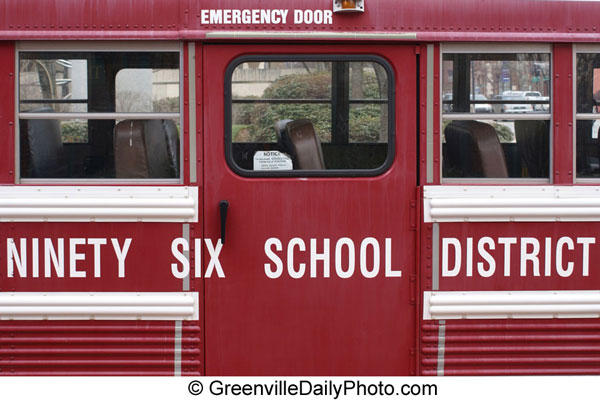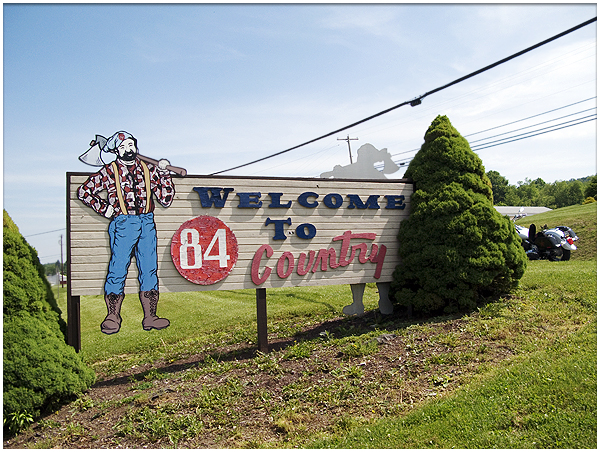I wondered if I could find any place names composed entirely of numbers. Thus, while communities such as Thousand Oaks and Twentynine Palms in California were interesting in a sense, they wouldn’t do for my purpose. I wanted to find places that transcended the precision of a description to reach entirely higher circles of absurdity.
Twenty, Lincolnshire, UK

Stereotypically, I figured, I’d probably find numerical place names in the former colonies rather than the motherland. Mainland Britain had additional centuries to come up with something other than numbers for is place names. Nonetheless I discovered a site where imagination must have waned momentarily. Somebody in Lincolnshire thought Twenty would be a good choice.
Twenty sits within an expanse of highly fertile soil reclaimed from the fens. I’ve intentionally skewed the map link to show the series of drainage canals that empty surrounding wetlands. This condition underlies one of the theories behind the hamlet’s unusual name. Apparently it happened to grow in proximity to the Twenty Foot Drain. Others theorized that its derivation may be due to its position 20 miles from Colsterworth? Or perhaps the original station fell within Section 20 of an Ordnance Survey map?
Uncertainty became a common theme with numerically named towns. Oftentimes nobody quite knew how it happened but it didn’t prevent rampant speculation, authoritative or otherwise.
Wonowon, British Columbia, Canada
Wonowon amused me because it sounds like it could be a First Nations word. That façade dissipates as soon as one understands that Wonowon straddles mile 101 of the Alaska Highway. It reminded me of another stealthy-numbered town, Notrees, Texas. Its name came after the last tree fell to make way for a petroleum facility.
I don’t have anything else to add about Wonowon so I’ll go a little off track. Let me mention the various Mile Houses of the Cariboo Road located elsewhere in British Columbia. The Basement Geographer once chronicled these.
Ninety Six, South Carolina, USA

Ninety Six (map) has one of those mysterious origins I referenced earlier. It includes various Native American possibilities and other lost-in-time legends. It dates back to the early 18th Century — rather ancient for U.S. standards — when this was an active and sometimes hostile borderland. Unsurprisingly, nobody bothered to record the logic behind the name. I guess settlers were more concerned with surviving on the frontier at the time.
I think one could make a strong case that Ninety Six is the most historic of the numerical place names. It occupied a strategic point during the Anglo-Cherokee War of 1758–1761. At that time it was attacked and survived a siege by Native Americans. It also figured in the latter part of the American Revolution when it once again withstood a siege. Loyalists manning the fort at Ninety Six were able to repel an attack by Continental Army forces under Nathanael Greene and Tadeusz Ko?ciuszko. The National Park Service preserves the grounds of the star fort at the Ninety Six National Historic Site.
Eighty Four, Pennsylvania, USA

Eight Four doesn’t have quite the same pedigree (map). Nonetheless it may have greater name recognition in some parts of the nation. A news report published on the town’s 100th anniversary provided several possible theories including the Presidential election of 1884 as well as the number of a mail drop used by a passing railroad.
Some of you may be familiar with the 84 Lumber stores. The chain has been eclipsed in recent years by the likes of Home Depot and Lowe’s but it’s still rather common in the Northeast and Mid-Atlantic regions of the United States. 84 Lumber began at and continues to maintain its headquarters in the town of Eighty Four.
Others in the United States
I can’t guarantee how significant some of these locations might be or whether they exist more in theory than in fact. However they are all listed as populated places in the U.S. Board on Geographic Names’ GNIS database.
- Sixes, Oregon: The community got its name from the nearby Sixes River which may be a corruption of a Native American word rather than an actual number.
- Twenty Three, Arkansas
- Twenty Six, Kentucky
- Thirty, Iowa
- Number Thirty-Seven, Pennsylvania: The name includes the word “Number.” It’s so obscure that the online maps ignore it, but it’s located along Mine 37 Road appropriately enough.
- Forty Four, Arkansas
- Forty Five, Tennessee
- Fifty-Six, Arkansas: The name includes the hyphen. Founders wanted to give it a “normal” name (Newcomb) but it was already taken so they named it informally for its school district number. That one stuck.
- Sixty Six, South Carolina
- Seventy Six, Kentucky: It’s located near Seventy Six Falls “…derived from the station number in the original survey, where the members of the surveying party had built a shop and lodging quarters near the top of the precipice.”
- Seventy Six, Missouri
- Eighty Eight, Kentucky: The town’s first postmaster apparently had that amount of pocket change when it came time to name the new post office.
- Hundred, West Virginia: A historic sign in town says “Henry Church, who died in 1860 at the age of 109 was familiarly known as ‘Old Hundred’ and the town was named for him.”
Using numbers as place names isn’t common although it seems to be more prevalent in Appalachia and the Ozarks. I’m not sure if one can come to a conclusion or if it’s just an interesting coincidence. Arkansas and Kentucky seem to be particularly fond of this unusual naming convention.

Leave a Reply